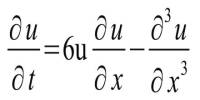Families may be perplexed as to why their child’s math classroom differs so greatly from what they recall from their own school days.
Why aren’t teachers putting pupils on the spot and getting them to prove that they know the math? Why do teachers allow students to approach problems in a variety of ways rather than simply instructing them on how to accomplish it?
Instructors are eschewing the conventional methods of math instruction in favor of more fair, evidence-based teaching and evaluation strategies. This implies that rather than all students receiving the same resources and evaluation methods, each student is given what they require.
For example, instead of giving all students in the classroom the exact same test, a student with test anxiety will be given an alternative format to showcase their learning.
Math is not ‘neutral’
Mathematics is not a “neutral” subject biases in math exist that are grounded in colonial ideals.
For example, what is traditionally considered a standard measurement in a Canadian math curricula is only standard in western cultures.
In traditional mathematics instruction, the teacher’s approach to solving a problem is emphasized as the best approach. This puts students who could approach the issue differently at a disadvantage. In other instances, their cultural approach to math is then seen as flawed.
Many strategies can be used
One study studied the multiplication skills Filipino immigrant children residing in Japan employed. In Japanese culture, children learn a formal multiplication method (kuku) that involves learning to recite times tables, whereas in the Philippines, it is common to use finger multiplication.
The study discovered that Filipino immigrant families only taught their kids finger multiplication if they noticed that their kid was having trouble with it. The children would hide this method from their teachers.
When one arithmetic method is presented as the only one that works, children are marginalized, and injustices are exacerbated.
Draw on existing knowledge
What are some signs teachers are practicing equitable teaching in math?
Teachers draw on students’ existing knowledge. In order to serve each student and their distinct learning styles, teachers should get to know their pupils and how they study best.
This indicates that educators think their pupils are capable of contributing knowledge to the larger learning community. This is in contrast to conventional teaching methods, which operate under the presumption that pupils are knowledge-void vessels to be filled.
Peer collaboration
When you were in school, what did participating in classroom activities look like? Did you raise your hand? Did you turn to your elbow partner? Were you sitting in rows and expected to be quiet until you were called upon?
Equitable classrooms encourage peer collaboration, values of learning from others, and student voice and action.
Due to the opportunity for all children to have their opinions heard and the validation of what could otherwise be hidden cultural methods of knowing arithmetic, this fosters an egalitarian learning environment.
An added bonus is that if all students have multiple ways to solve a problem, they have more strategies to rely on.
What an equitable math classroom looks like
- Using surveys of student interests, teachers can learn more about their students and learn what they like and need from their teachers to succeed in arithmetic.
- Students can write narratives about their experiences with math to help identify students’ attitudes towards math (how they feel about themselves as a math learner, what they think math is about, whether they like math or not).
- Instead of just giving the right answer, teachers place more emphasis on the problem-solving techniques and approaches used by their students. Teachers allow students to show their thinking in a variety of ways (like in conversations and group work).
- Instructional time (when the teacher is speaking about the ideas being taught) happens after students engage with their learning. This communicates to the pupils that they are capable of fixing the problem, and that their ideas are both significant and valued.
- There are a variety of strategies and solutions generated by the students.
- Students have lots of choice about where they are working (standing at whiteboards, working collaboratively with peers or in groups, building hands-on models).
- Instead of students only writing tests, the teacher is able to use diverse and different types of data to assess student learning (conversations, group work, models).
What an equitable math classroom sounds like
- Teachers ask questions about what students are thinking, rather than giving them the answers.
- Before offering assistance, teachers wait for students to ask for it to show that they can solve the problem on their own (though adults can remind students they are there to help when students need it).
- Students talk more than the teacher; these classrooms are loud with student talk.
- Teachers ask questions about student thinking (“How do you know that’s the correct answer?”; “Can you tell me more about your thinking?”).
- The teacher uses the students’ thoughts to consolidate the learning once the pupils have worked with the challenge.
What an equitable math classroom feels like
- A safe space to showcase the voices and ideas of all people in the classroom.
- Welcoming, fair and supportive.
Equitable math classrooms can be best realized when families, instructors and students accept the necessity and benefits of fair classrooms.
















